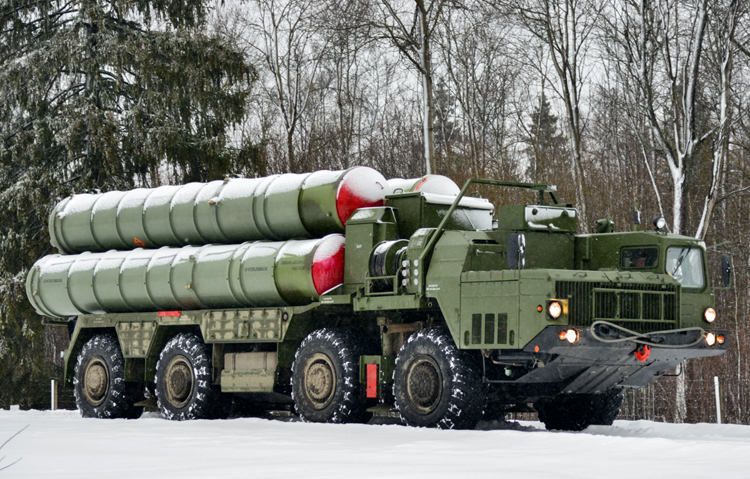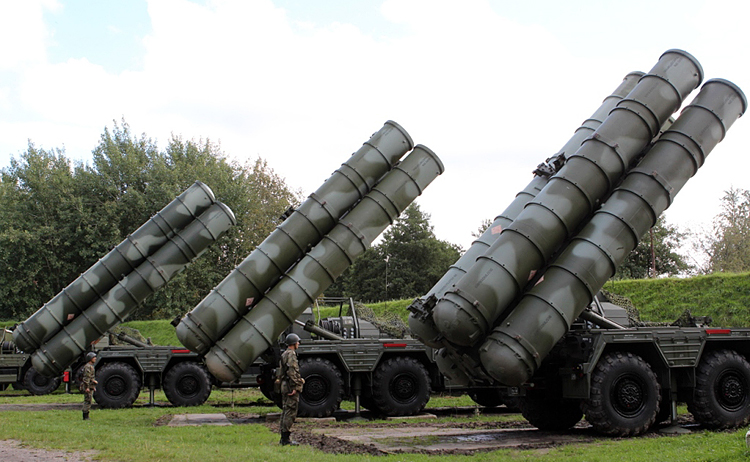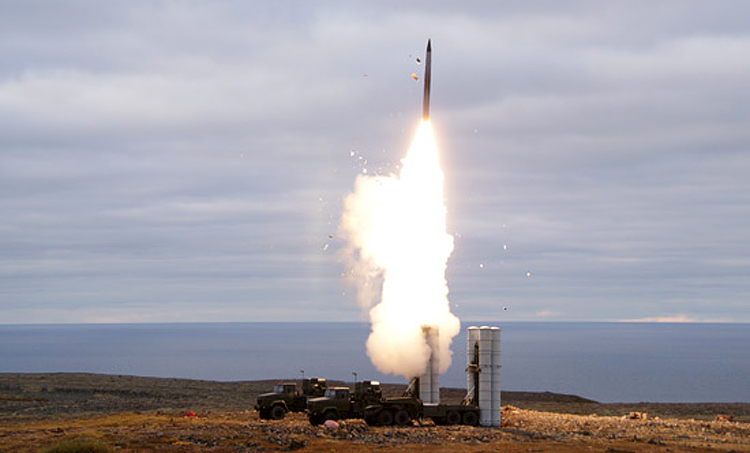INDIAN ARMED FORCES CHIEFS ON OUR RELENTLESS AND FOCUSED PUBLISHING EFFORTS

The insightful articles, inspiring narrations and analytical perspectives presented by the Editorial Team, establish an alluring connect with the reader. My compliments and best wishes to SP Guide Publications.

"Over the past 60 years, the growth of SP Guide Publications has mirrored the rising stature of Indian Navy. Its well-researched and informative magazines on Defence and Aerospace sector have served to shape an educated opinion of our military personnel, policy makers and the public alike. I wish SP's Publication team continued success, fair winds and following seas in all future endeavour!"

Since, its inception in 1964, SP Guide Publications has consistently demonstrated commitment to high-quality journalism in the aerospace and defence sectors, earning a well-deserved reputation as Asia's largest media house in this domain. I wish SP Guide Publications continued success in its pursuit of excellence.
- Operation Sindoor: Resolute yet Restrained
- India’s Operation Sindoor Sends a Clear Message to Terror and the World – ‘ZERO TOLERANCE’
- Japan and India set forth a defence cooperation consultancy framework, talks on tank and jet engines
- Terrorist Attack in Pahalgam in Kashmir: Unfolding a long surgical war against PAK
- Lt General Pratik Sharma takes over Command of Indian Army's Northern Command
Arriving S-400 Missile System
S-400 can fire three types of missiles and can also detect and destroy incoming medium range ballistic missiles. The S-400 was developed to defend against missiles and aircraft of all types, including stealth. It is a highly potent and accurate weapon that can tip the balance of power in a theatre of war.
 |
The Author is Former Director General of Information Systems and A Special Forces Veteran, Indian Army |

Russia has begun deliveries of S-400 surface-to-air missile systems (SAM) to India. This was stated by the Director of the Federal Service for Military-Technical Cooperation (FSMTC) Dmitry Shugaev on the eve of the Dubai Air Show. He also said that the equipment is being delivered to India on schedule. Earlier, Russia had said the delivery of S-400 to India will begin by the end of 2021. However, with Russian President Vladimir Putin expected to arrive in India on December 6 for the annual summit with Prime Minister Narendra Modi, the first deliveries of S-400 could well coincide with Putin’s arrival.
Russia has already delivered the S-400 SAMs to China and Turkey and China has deployed the same against India. Media reports of June 2021 indicated that that the People’s Liberation Army (PLA) has upgraded Hotan air base in Xinjiang and Nyingchi air base in Tibet. Both bases are just across the Line of Actual Control (LAC) in Ladakh and Arunachal Pradesh respectively with the PLA deploying S-400 squadrons to protect them from Indian aerial threat. This gave an edge to the PLA over the Indian Air Force.
In October 2016, India had signed an agreement 'in principle' with Russia for procurement of the S-400 Triumf during the Modi-Putin summit in Goa, giving the nod for a government-to-government deal for it. Eventually, the contract for five S-400 SAM systems for $5.5 billion was signed during the bilateral summit between the two countries in 2018. In 2019, India reportedly paid an advance of about $800 million for supply of the S-400.
Russia has already delivered the S-400 SAMs to China and they have deployed the same against India at bases just across the Line of Actual Control (LAC) in Ladakh and Arunachal Pradesh. This gives an edge to the PLA over the Indian Air Force.
Russia's S-400 (nicknamed Triumf) is an upgraded version of the S-300 system, manufactured by Almaz-Antey and is in Russian military service since 2007. It comprises associated battle management system of command post and launchers, acquisition and engagement radars besides all terrain transporter-erector-launcher vehicles. It can fire three types of missiles and can also detect and destroy incoming medium range ballistic missiles. The S-400 was developed to defend Russian air space and a few hundred km further against missiles and aircraft of all types, including stealth. It is a highly potent and accurate weapon that can tip the balance of power in a theatre of war.

Equipped with long range radars to track 100 to 300 targets simultaneously, the S-400 (called SA-21 Growler by NATO) has various kinds of supersonic and hypersonic missiles to intercept the hostile missiles or aircraft or drones at different ranges. It can destroy incoming hostile aircraft, stealth fighters, missiles and drones at ranges of up to 400 km with a tracking range of 600 km and the ability to hit targets at a blistering speed of 17,000 km an hour – faster than any existing aircraft.
The S-400 uses three different missiles to cover its entire performance envelope; the very long-range 40N6, long-range 48N6 and medium-range 9M96 missile. The S-400 utilises an active electronically scanned array. One system comprising up to eight battalions can control up to 72 launchers, with a maximum of 384 missiles. The missile is fired by a gas system from the launch tube and sent off more than 30 metres into the air before the rocket motor ignites which increases the maximum range, and decreases the minimum. All missiles are directed explosion warhead, increasing the chances of complete destruction of the target.
S-400 can destroy incoming hostile aircraft, stealth fighters, missiles and drones at ranges of up to 400 km with a tracking range of 600 km and the ability to hit targets faster than any existing aircraft
According to ‘Air Power Australia’, “The S-300P/S-400 family of surface-to-air missile systems is without doubt the most capable SAM system in widespread use in the Asia-Pacific region.” According to defence analyst Ivan Oelrich, the S-400 has many features specifically designed to overcome countermeasures and stealth, such as a larger, more powerful radar that is more resistant to jamming, besides it also actually has a set of three missiles of varying range that provide overlapping layers of defence.
The US has been periodically reminding India of sanctions under the Countering American Adversaries Through Sanctions Act (CAATSA); which obliges the US President to impose sanctions on any state making a significant arms deal with Russia. The case for exempting India from sanctions under CAATSA for importing S-400 is presently lying with US President Joe Biden. India had already informed the US authorities that India has paid advance for these imports in 2019.
India requires the S-400 urgently to offset the advantage China has against the IAF since China has deployed S-400 systems at Hotan and Nyingchi air bases opposite India. Biden therefore should have no hesitation in according the exemption. On the other hand if the US sanctions India under CAATSA, it will be a big setback to the India-US Comprehensive Global Strategic Partnership.
A major advantage of the S-400 is that it can destroy hypersonic platforms; aircraft, missiles and munitions. Enemy hypersonic weaponry has become a major worry in recent times. The Russian military has been working on the issue of how to fight against hypersonic missiles of a potential enemy. Multiple exercises of air defence units to test interception of hypersonic missiles were held by Russia in early October 2021 in the Western and Eastern military districts.
India requires the S-400 urgently to offset the advantage China has against the IAF since China has deployed S-400 systems at Hotan and Nyingchi air bases opposite India. US President Joe Biden therefore should have no hesitation in exempting India from sanctions under CAATSA.
At the Ashuluk test site, the S-400 anti-aircraft missile regiment of the Leningrad Air Defence Association ZVO was involved, and at the Kapustin Yar test site, targets hit the S-400 systems and Pantsir-C1 complexes of the anti-aircraft missile regiment from the troops and forces in northeastern Russia. The exercises were recognised as successful. The S-300V4, Buk-M3 and Tor-M2 SAM systems have also been tested as part of large-scale exercises at the Yar training ground in conditions of electronic warfare interference conditions to test interception of hypersonic munitions.
According to Russian sources, several Russian anti-aircraft systems and complexes are capable of intercepting and destroying promising enemy hypersonic ammunition at once. These include the S-300, S-350, S-400 and S-500 air defence systems. In addition, modifications have been made to Russia’s Buk air defence missile system to intercept hypersonic missiles. The Buk missile system is a family of self-propelled, medium-range SAM systems.

Russia has also tested the S-500 SAM system capable of intercepting stealth aircraft, long-range ballistic missiles and hypersonic cruise missiles. It uses a number of different surface-to-air missiles and has an operational range of 600 km. Russian Deputy Prime Minister Yuri Borisov confirmed in September 2021 that Russian Armed Forces had begun induction of the S-500 surface-to-air missile system.
The S-500 is intended to be complementary to the S-400 missile defence system. While the S-400 is primarily meant to shoot down a range of aerial targets like aircraft and cruise missiles, the S-500 can destroy ballistic missiles, which are much faster and need to be shot down at significantly higher altitudes. Analysts claim the S-500 could even target satellites in low-earth orbit. Borisov told media he considered India to be the first “prospective” buyer for the S-500 system, adding, “India is the largest importer of Russian weapons, and we sometimes sell to India what we don’t sell to other countries."
The S-400 will bring the Indian military at par with China in terms of air defence and capability to destroy all platforms of the Pakistan air force.





